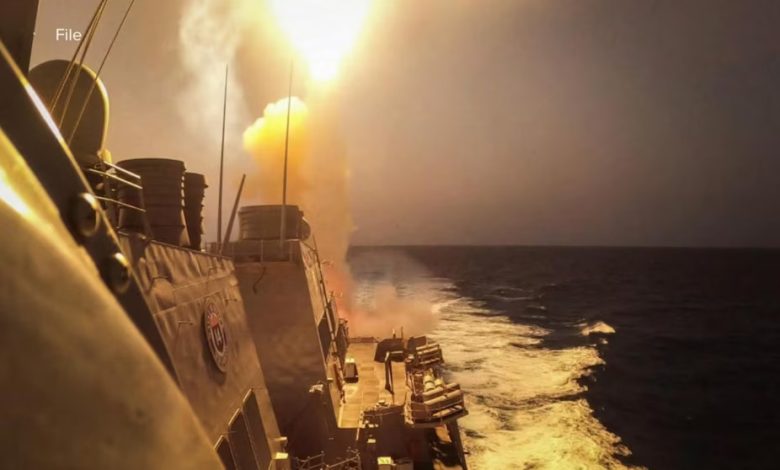Rising Tension in Red Rea

Agencies – Sudan Events
Experts predict disruptions in the Red Sea and Suez Canal because of recent attacks by the Yemeni Houthis rebel group that have forced carriers to avoid waterways, will not carry short-term major consequences but will have long-term political and economic risks.
Connected to the Mediterranean by the Suez Canal, the Red Sea is the shortest shipping route between Europe and Asia.
According to the US Energy Information Agency (EIA), oil shipments via the routes accounted for 12% of total seaborne-traded oil in the first half of 2023 and liquefied natural gas (LNG) shipments accounted for 8% of worldwide LNG trade.
In the first 11 months of 2023, around 8.2 million barrel per day (bpd) of liquids, including crude oil and oil products, were transported by vessels moving along the route, energy cargo tracker, Vortexa, revealed in an analysis Wednesday.
Around 30 tankers pass via the Suez Canal on the northern side of the Red Sea, while 26 use Bab el Mandeb, the southernmost point.
There are around 230 tankers situated within the Red Sea on an average day,155 are loaded and 75 are ballasted.
Jay Maroo, a lead crude analyst for the Middle East and North Africa region at Vortexa, said Europe has historically been an importer of middle distillate products from the Middle East and India and the flow has picked up, especially for diesel since 2022.
Underlining the importance of flows via the Red Sea, Maroo said volumes of diesel and crude oil sailing northbound have grown sharply on the back of European and US sanctions on Russia.
Maroo said if there is a sustained disruption on Red Sea transits, vessels would have to take longer routes which would increase vessel tonnage requirements but also increase bunker consumption for operating vessels on the laden and the ballast legs, resulting in increased freight costs.
Francesco Sassi, a Bologna-based research fellow in energy geopolitics and markets at Ricerche Industriali ed Energetiche (RIE), pointed out that “LNG tankers have not been a primary target of Houthi attacks so far.”
“That is either because many tankers transiting northbound the canal come from Qatar, supporting the same faction, or because, politically speaking, US and Russian tankers going to Asia are not easy targets for Houthi and imply broader consequences compared to other vessels,”
The unrest near the Suez Canal comes on the heels of a recent drought that has prompted operators in the Panama Canal, another vital artery in international transportation routes, to reduce the number of ships permitted to use the canal.
Approximately 12% of global trade passes via the Suez Canal, whereas 5% via the Panama Canal.
“As long as the Panama Canal disruption persists, it decreases the arbitrage between Asian and European markets for US LNG, which became the main balance force in the global gas market after the Russian invasion of Ukraine and the crumbling of the EU-Russia gas interdependence,” said Sassi.



